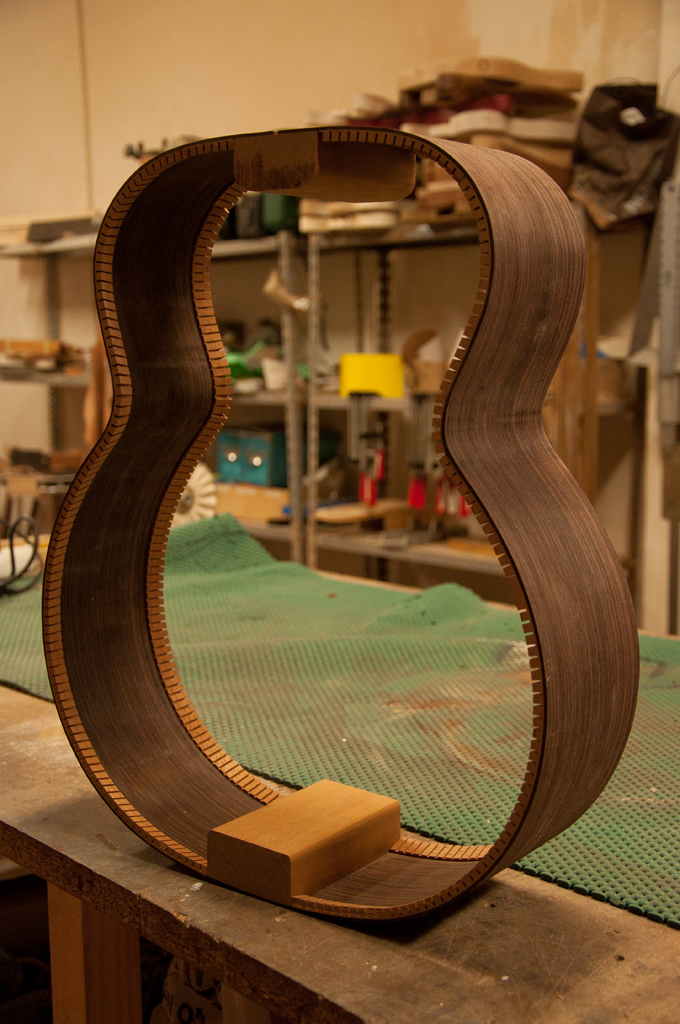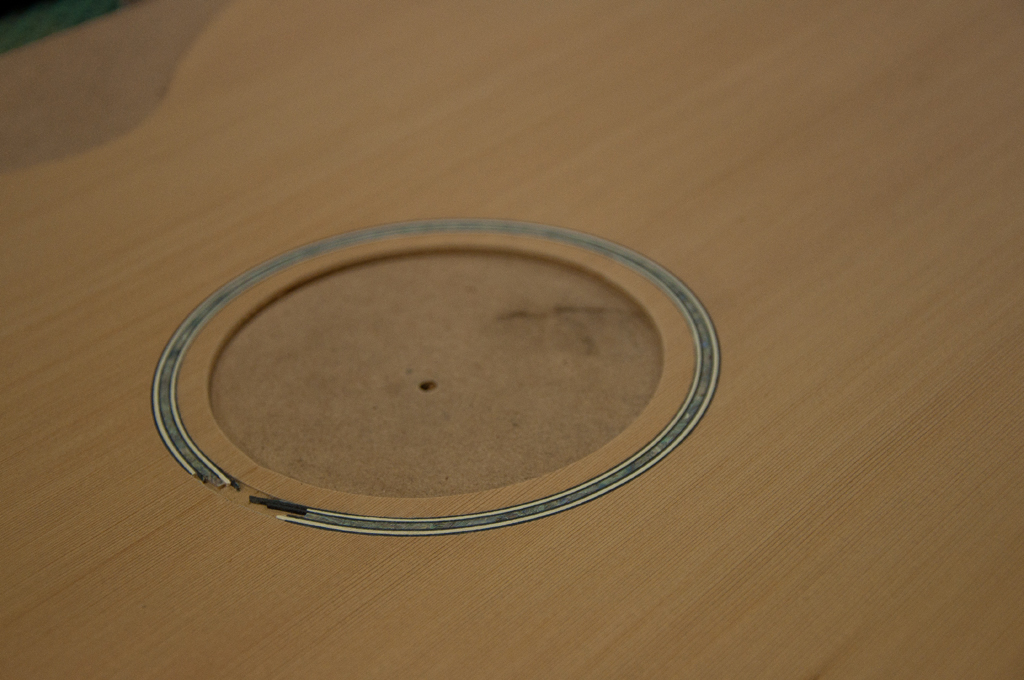I'd say that was pretty thin for a cedar top, if it's typical cedar. The problem is that, although cedar is usually lower in density and stiffness than most spruces, all woods vary a lot, so there's a lot of overlap in properties. Fortunately, there are ways to get more exact indications.
The first thing you need to know is the stiffness of the wood. This can be measured directly, and is particularly easy to find if you start by measuring the properties of the top half before you join it or cut it to shape. One way is to support it off the bench at both ends, put a weight in the middle, and measure the deflection as it bends along it's length. Many people simply use the same weight every time, on the same rig, and thickness the top until they get a deflection that they know will work for them. This is good if you have some datsa on what has worked for you in the past.If you know the distance between the supports, the thickness and width of the plate, the deflection and the weight you used you can calculate the Young's modulus, and this will allow you to figure out the thickness you'll need. Gore/Gilet give the formula for a rectangular beam as:
E= ( 9.81 F*(L^3))/4*b*d^3*y where:
E = Young's modulus in Pascals
F= the mass load in kg.
L= the span between supports, in meters
b= the width of the beam in meters ( a top plate can be thought of as a wide, thin beam, if the width and thickness are uniform)
d= the depth or thickness of the beam, also in meters
y= the defection, in meters
I have not used this method, but I'm pretty sure there are threads on 'deflection testing' in the archive of this forum. You can. of course, use off cuts from the plate to get this information, with the caveat that they may not be representative of the top as a whole.
Another way to do this is to find the vibration frequency of the first 'bar' mode of a rectangular beam, and use that and other information to calculate the Young's modulus. The formula there is:
E= (0.996*rho*f^2*L^4)/d^2 where:
E= Young's modulus in Pascals
rho = density in kg/cubic meter
f= frequency
L= the length of the beam
d= the thickness or depth of the beam.
You can sometimes get a usable indication of pitch from tapping a plate that is held about 1/5 of the way in from the end and tapped in the center. It's a pain to convert from pitch to frequency, though. There are lot of computer programs available these days that are either free or cheap that will give you the frequency of a recorded tap. This is not without pitfalls, but is pretty reliable, and easy to do. Note that the E value you get either way is probably not going to be perfectly exact: aside from inaccuracies of measurement, there are simplifications built into the formulas.
Once you have the young's modulus for bending along the grain, you can get a ball park thickness pretty easily. I use a formula that is based on a fairly simple model that is 'close enough', given the number of uncertainties. The idea is that you want to make the top as thin as you can (to keep the weight down) while still being stiff enough. The limit for stiffness is set by long term deformation under bridge torque. Lengthwise stiffness is far more important here than cross wise stiffness, which is usually lower than lengthwise stiffness anyway; so I just use the lengthwise E value. The stiffness of a beam is proportional to the Young's modulus and the cube of the depth or thickness, all else equal. I have come up with an 'index number' that is simply: I=d^3 * E, with d in _millimeters_, and E in _megaPascals_. I find that, for steel string guitars, an I of around 250,000 works well. For classicals I use I=160,000.
In use, then, suppose I find that a particular piece of cedar has an E value along the grain of 8000 mPa, which is pretty typical for cedar. I would divide that into the index number of 250,000, to get 31.25. The cube root of that is 3.14, and that is the thickness I'd go for, in millimeters.
You can go the other way, too. Your top is now 2.5mm thick. Cube that to get 16.625. 250,000/16.625= 15,000 mPa. I have never measured a piece of cedar with an E value that high, so I think that top is indeed too thin. I'll note, however, that the numbers I 've given are ones that work for me, using the methods and designs I'm accustomed to. You might be able to use that top with a different bracing system than I use: I'd suggest some sort of lattice.
I'll also note that there's a 'quick and dirty' way to get a pretty good idea of the Young's modulus along the grain of soft woods. It turns out that all soft woods havevery much the samer structure on a microscopic scale. As a result of this, the E value along the grain tracks the density quite closely in the same way for all soft woods. Soft woods with a density of 300 kg/m^3 will tend to have E values around 6000 mPa, and samples that have a density of 500 kg/m^3 will be around 16000 mPa. About 2/3 of the samples I've measured fall within 10% of that straight line. Given all the uncertainties involved, a measurement of density is probably the easiest way to find the E value 'close enough'.
|



